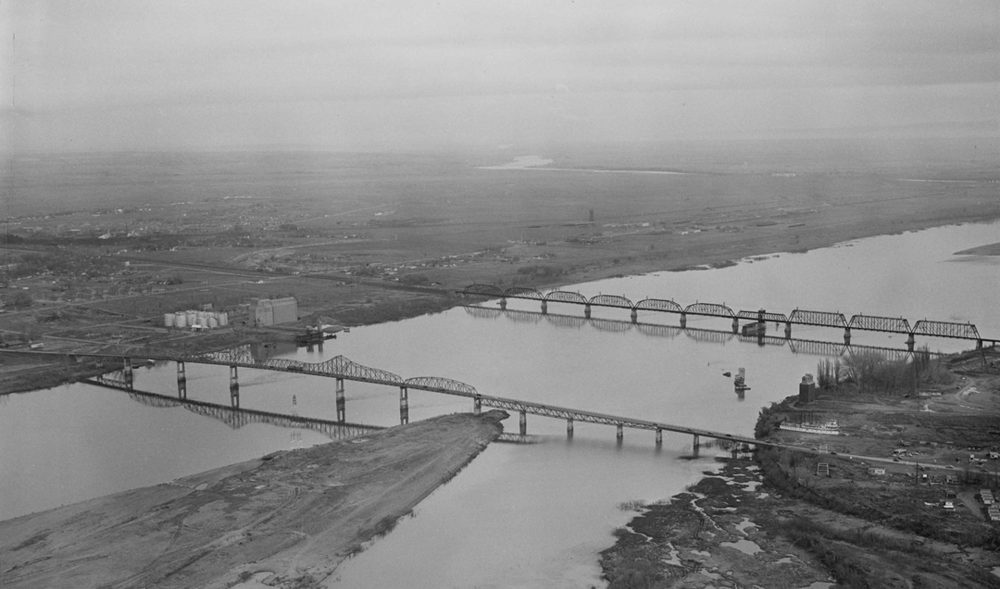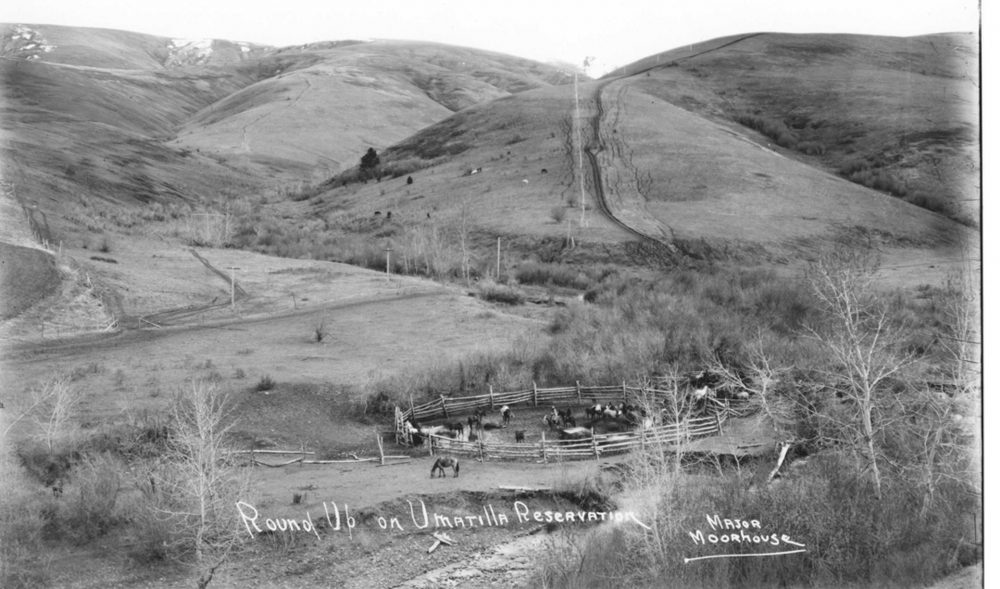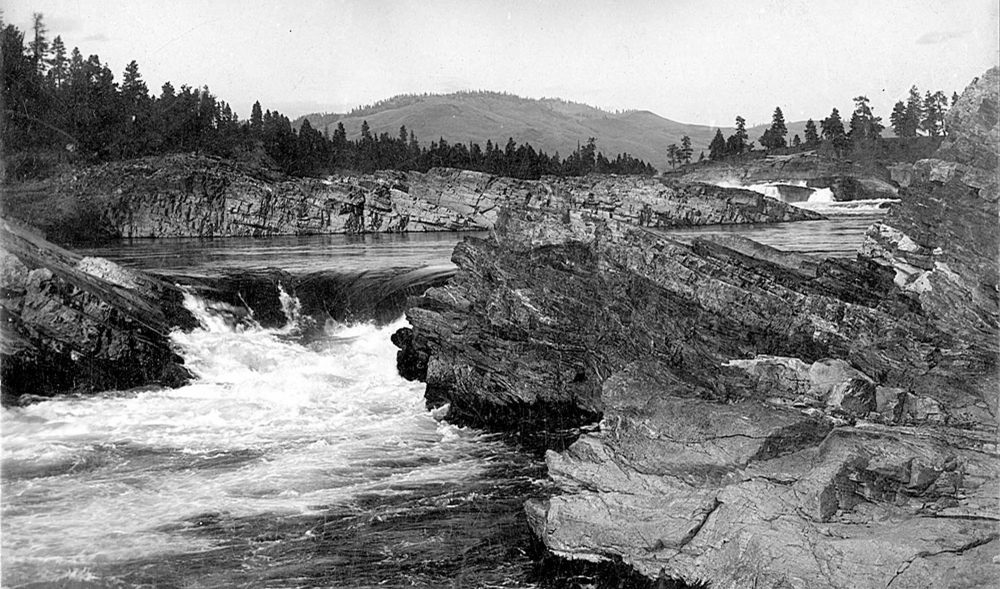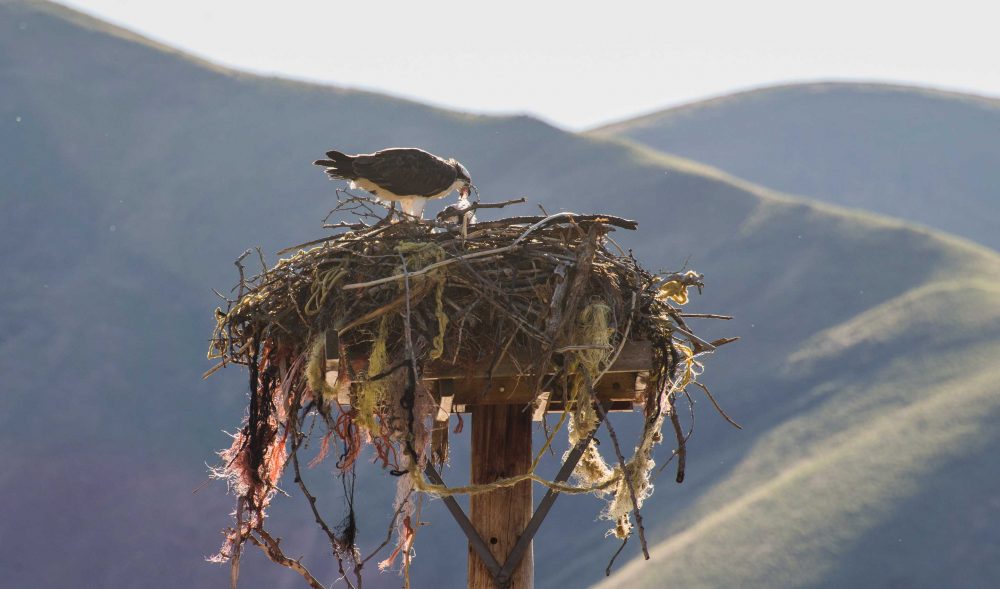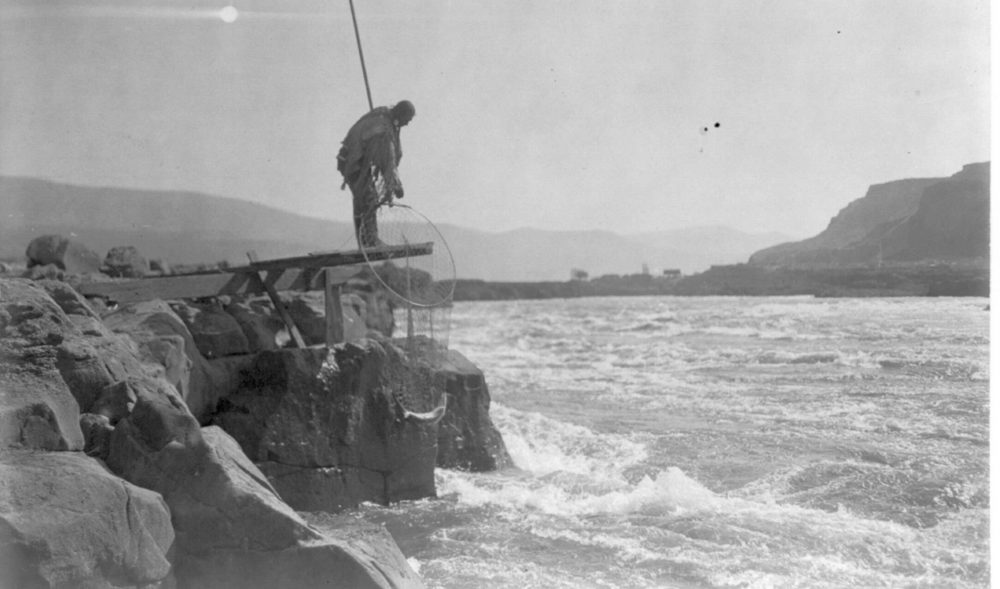Tag Result
tag: Dams
What is the legacy of dams on the Columbia River? What would be the benefit of restoring salmon to the Columbia and reviving the health of the river? These are the questions considered in the latest volume of the Confluence journal Voices from the River
The Sacajawea State Park area saw a lot of change between the surrender of Chief Joseph and the revelation of the Hanford nuclear operations only a century later: railroads, dams, and plutonium replaced trade and family.
The confluence of the Snake and Columbia Rivers was a major uniting force for tribes of the Columbia River basin. It became a major site for settlers later, as the waterways provided a convenient mode of transportation.
Kettle Falls was the largest waterfall of the Columbia River. Kettle Falls was for over 10,000 years a major indigenous fishing and trade site. In 1940, they were dammed by the Grand Coulee and formed Lake Roosevelt.
Chief Timothy Park, in Washington, is on an island off the Snake River. Chief Timothy Park is close to Lower Granite Dam, which has a fish ladder. The park is home to a Confluence “Listening Circle” amphitheater.
Native methods for catching fish along the Columbia River used spears, baskets, and weirs. White newcomers saw these as inefficient and began using mechanical processes such as fish wheels to increase canneries’ catches.


